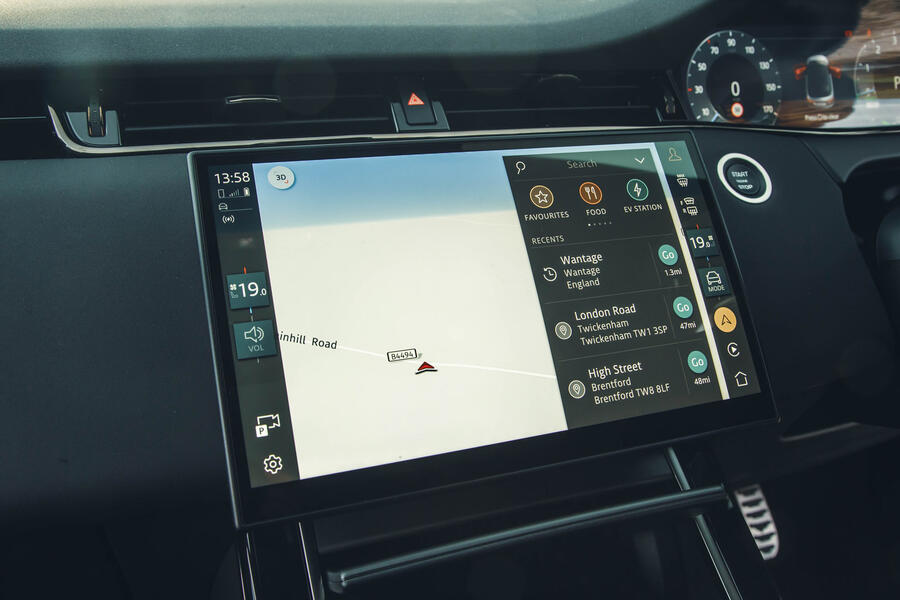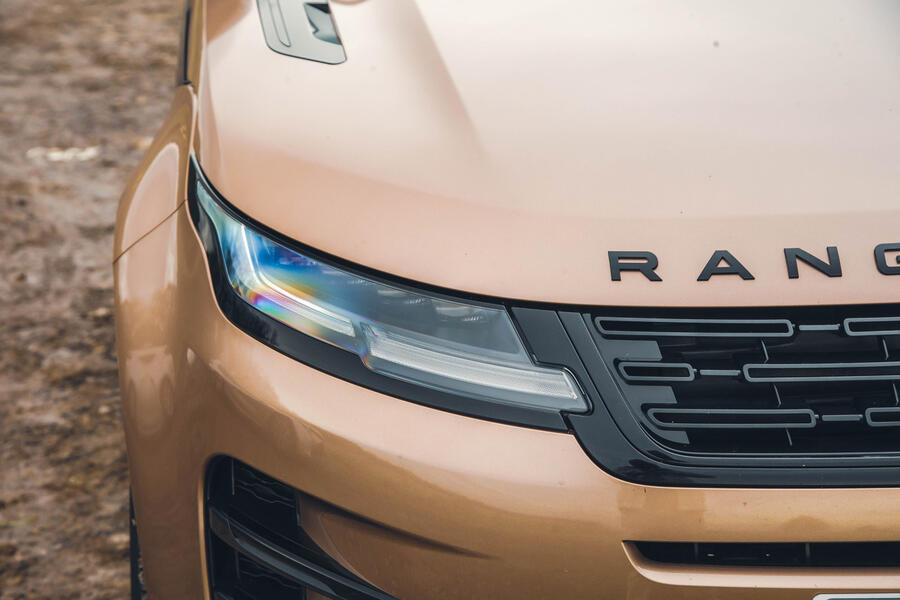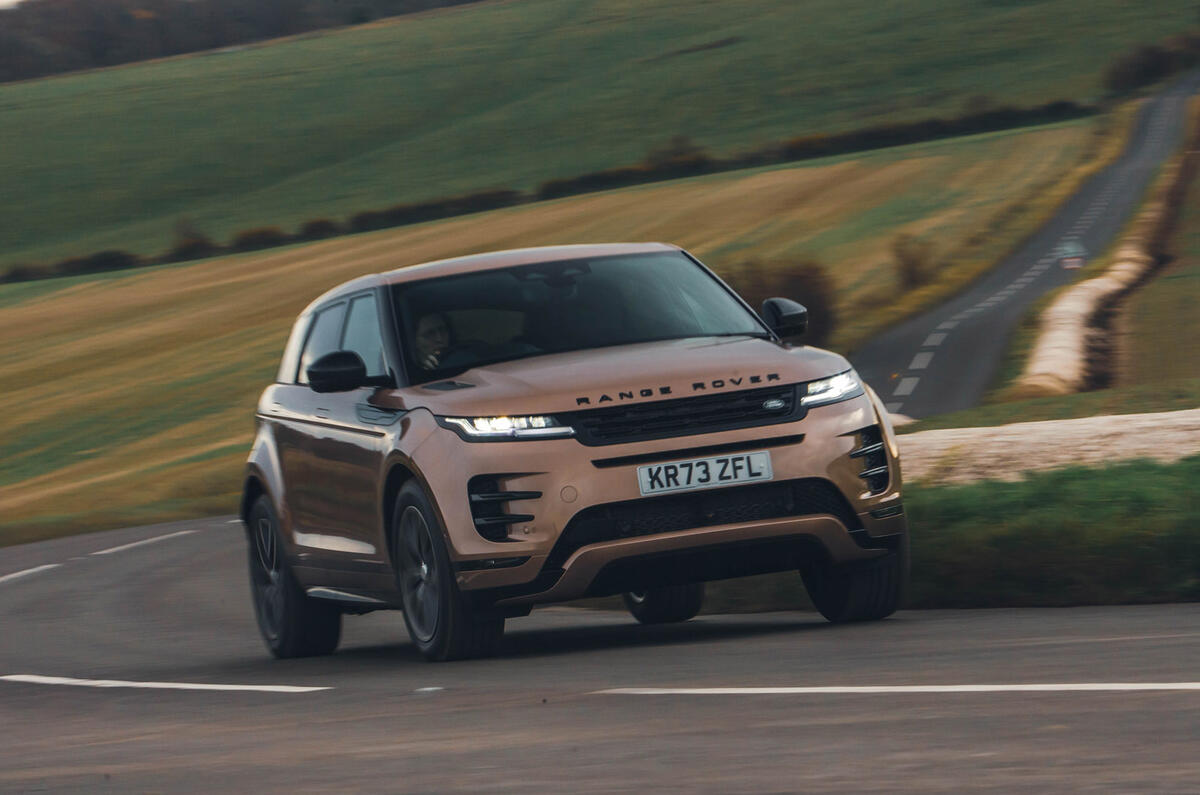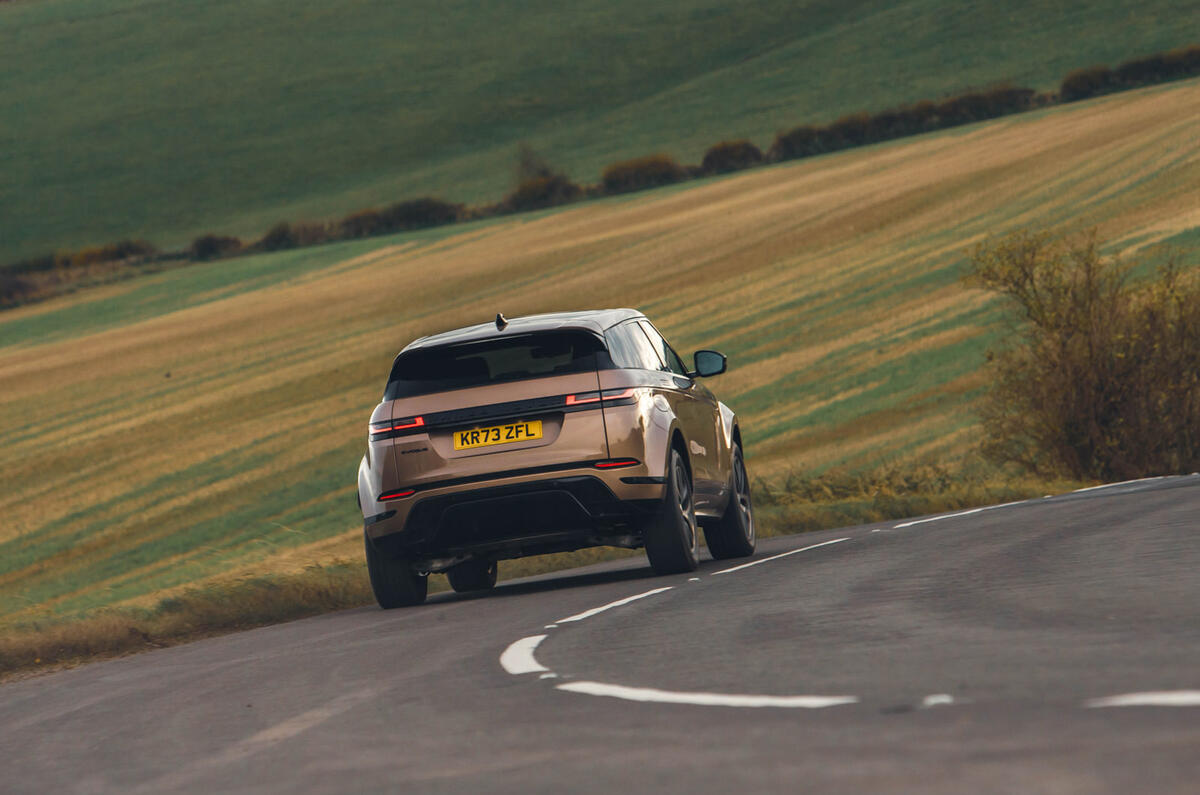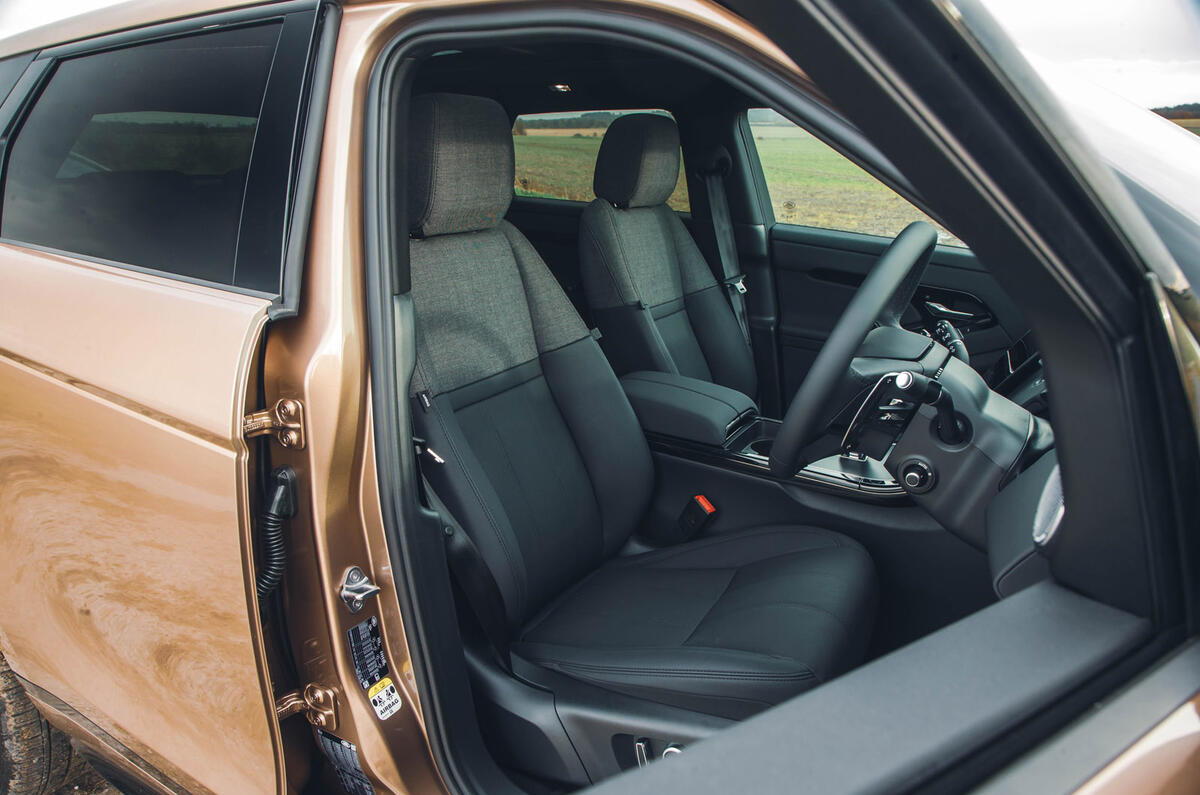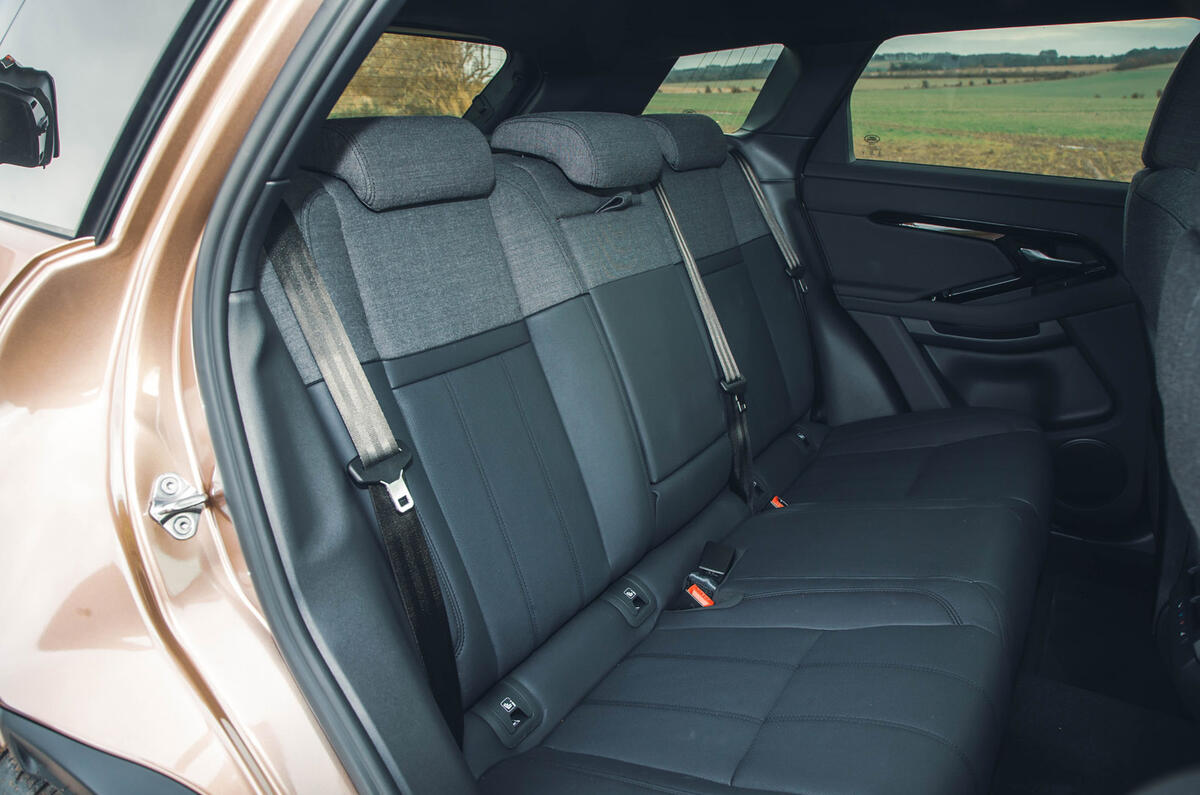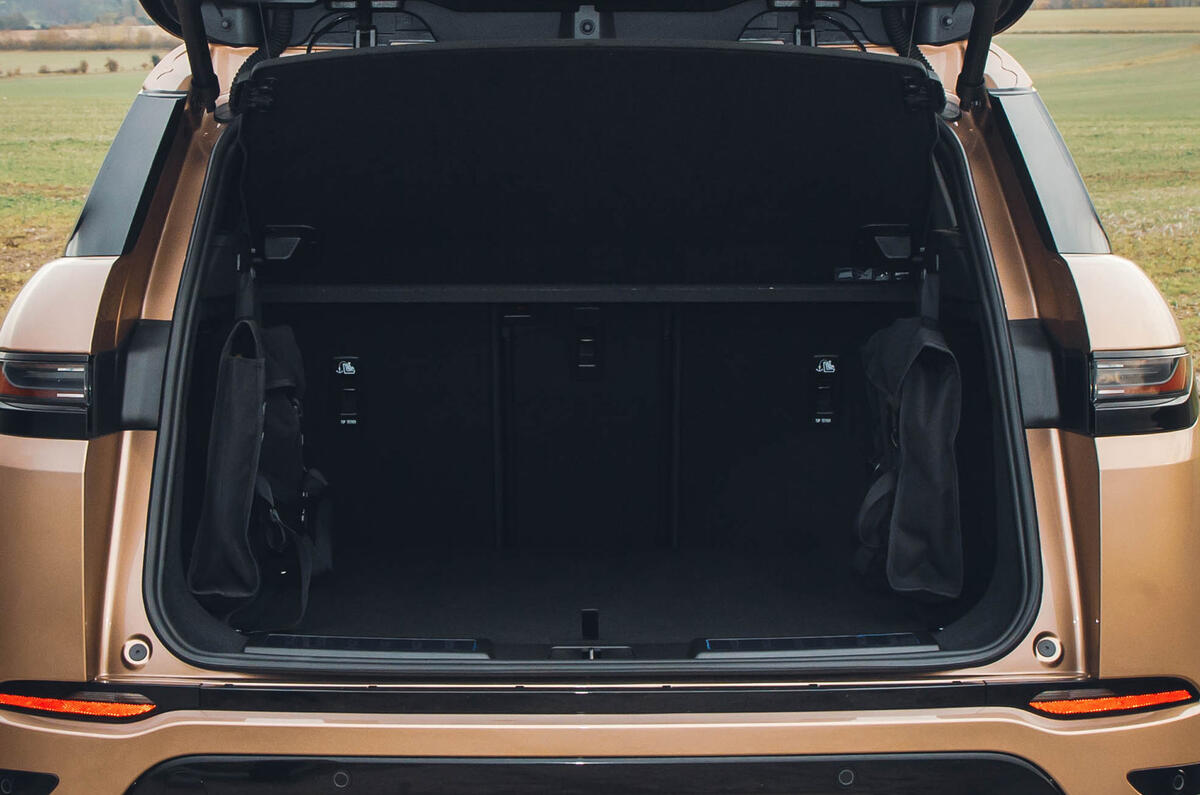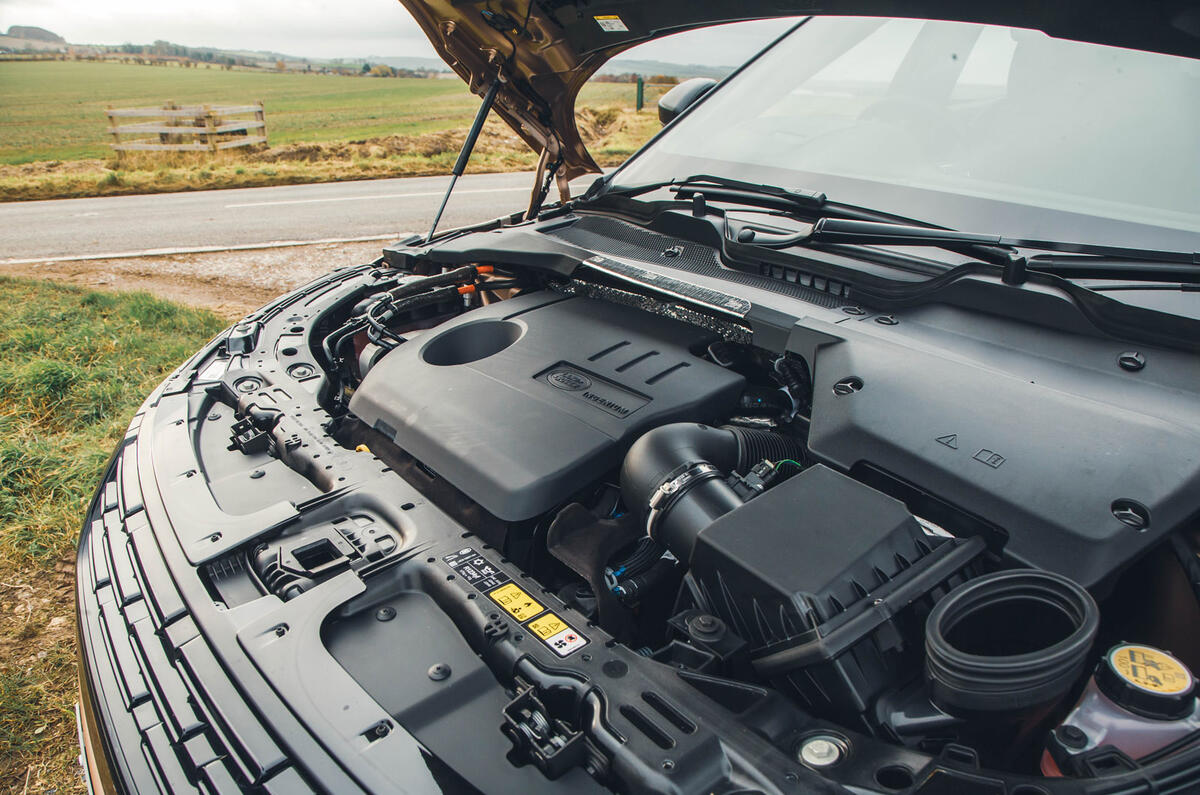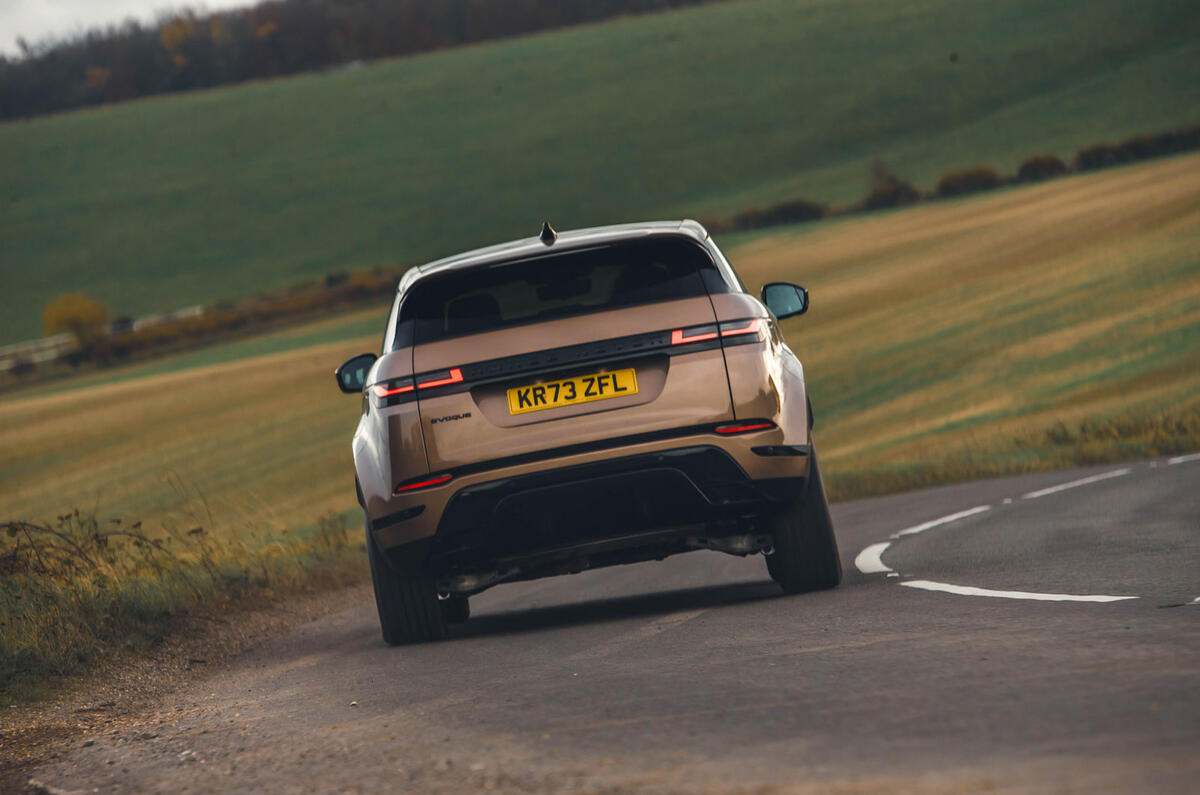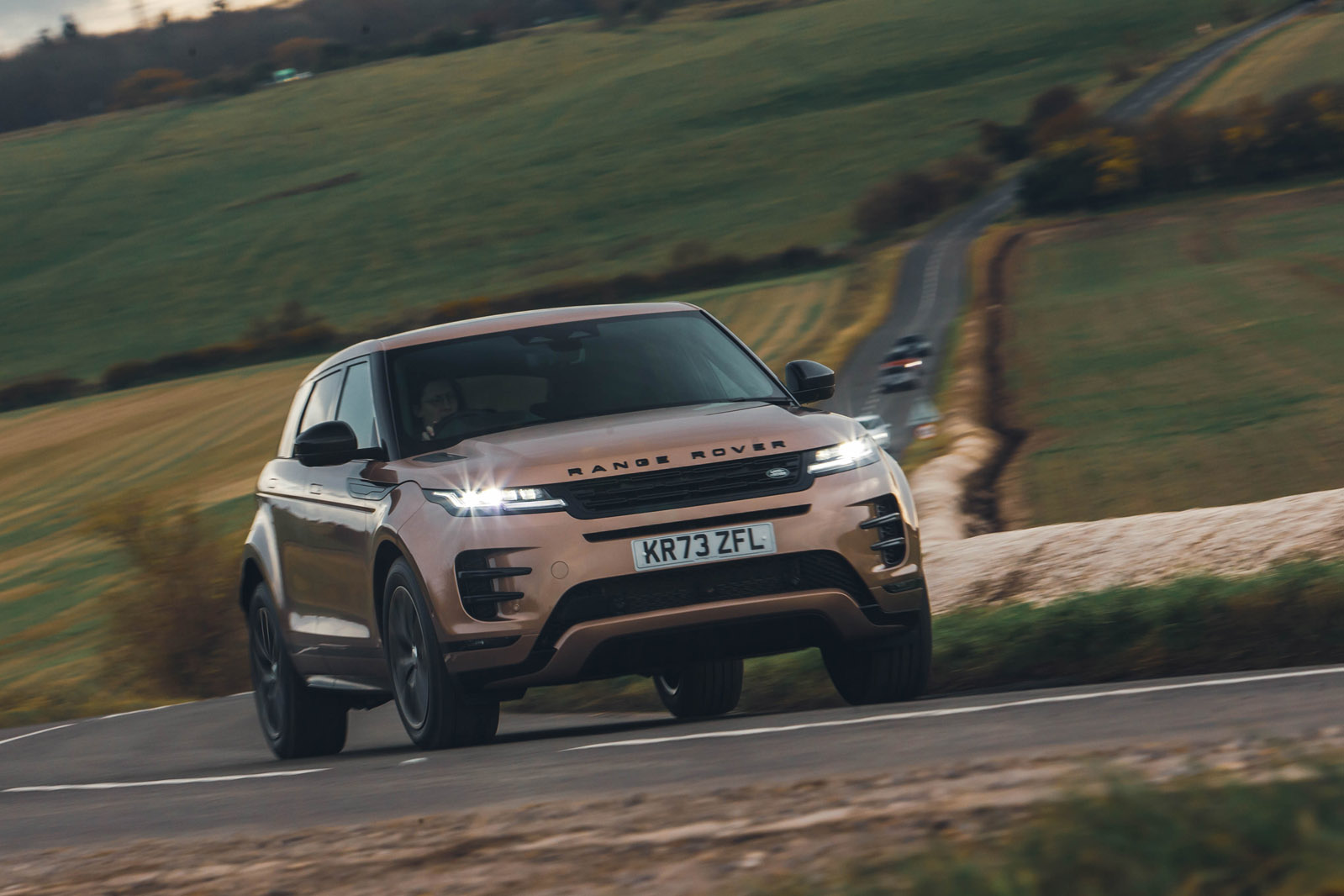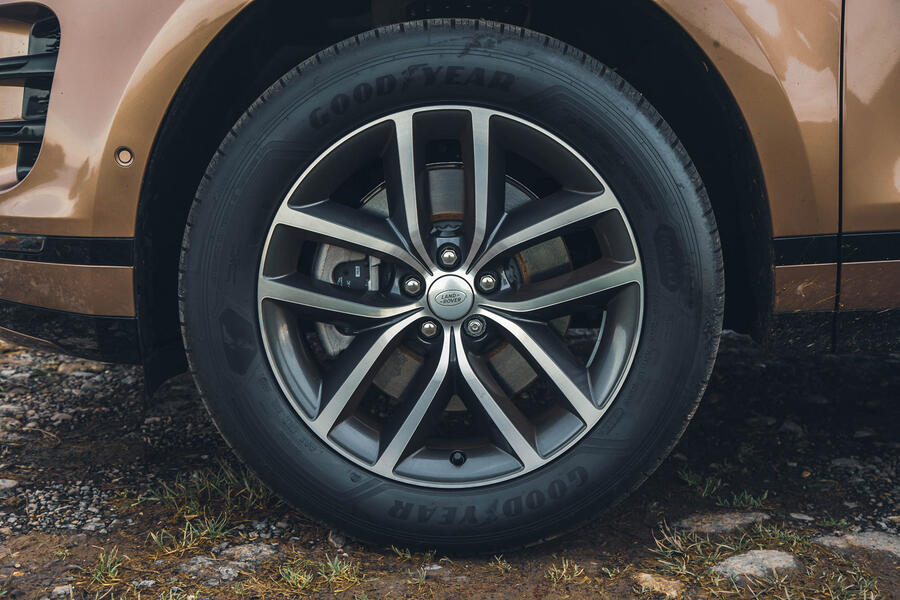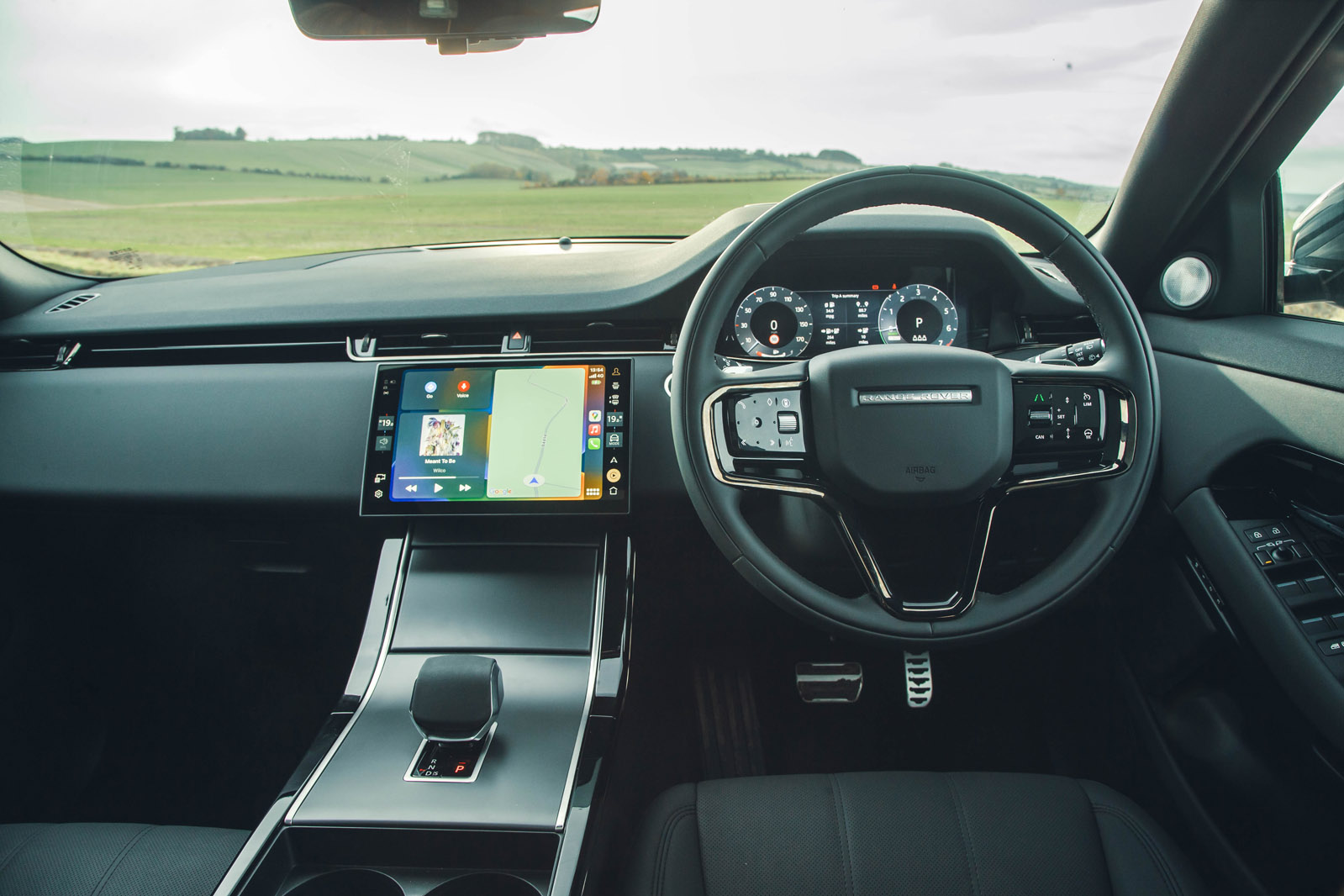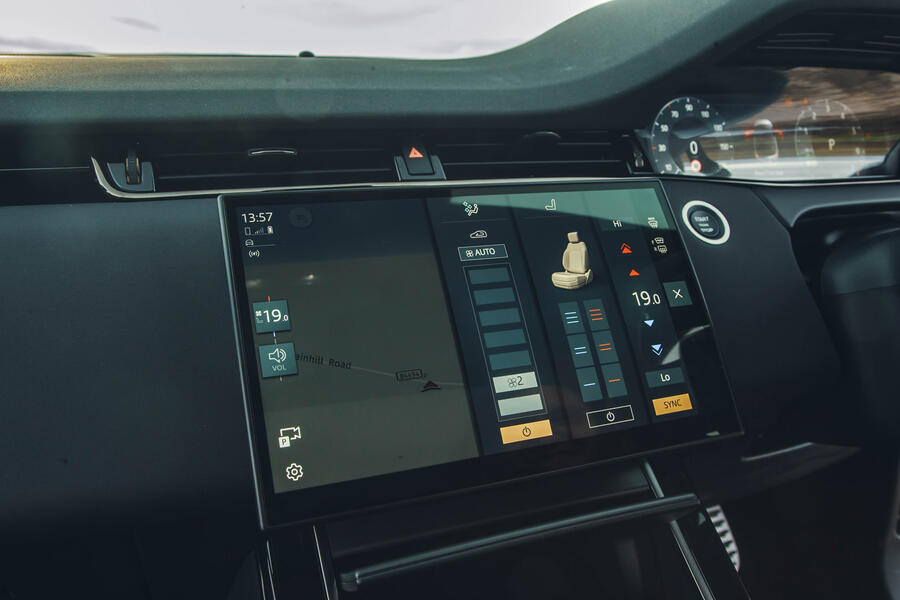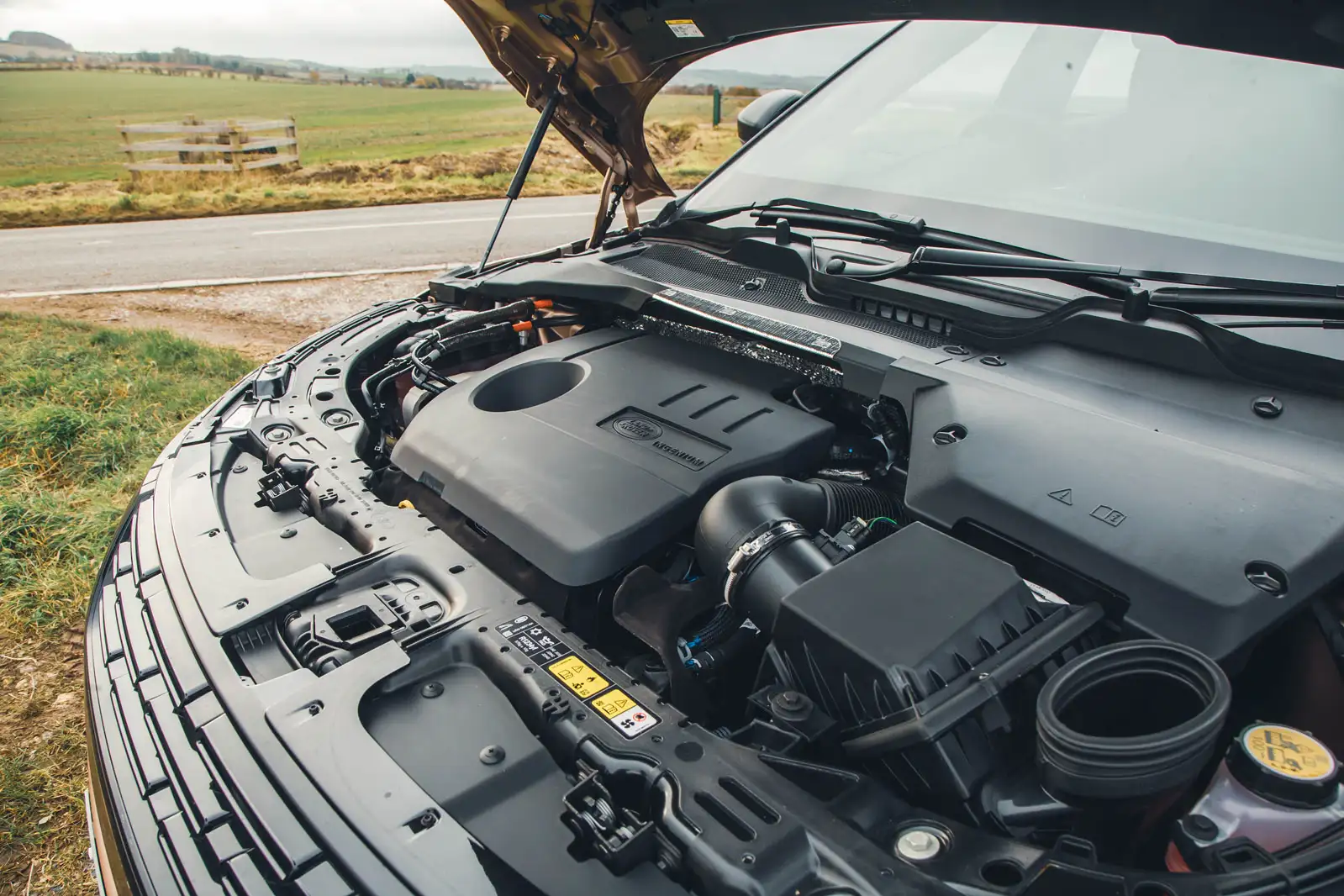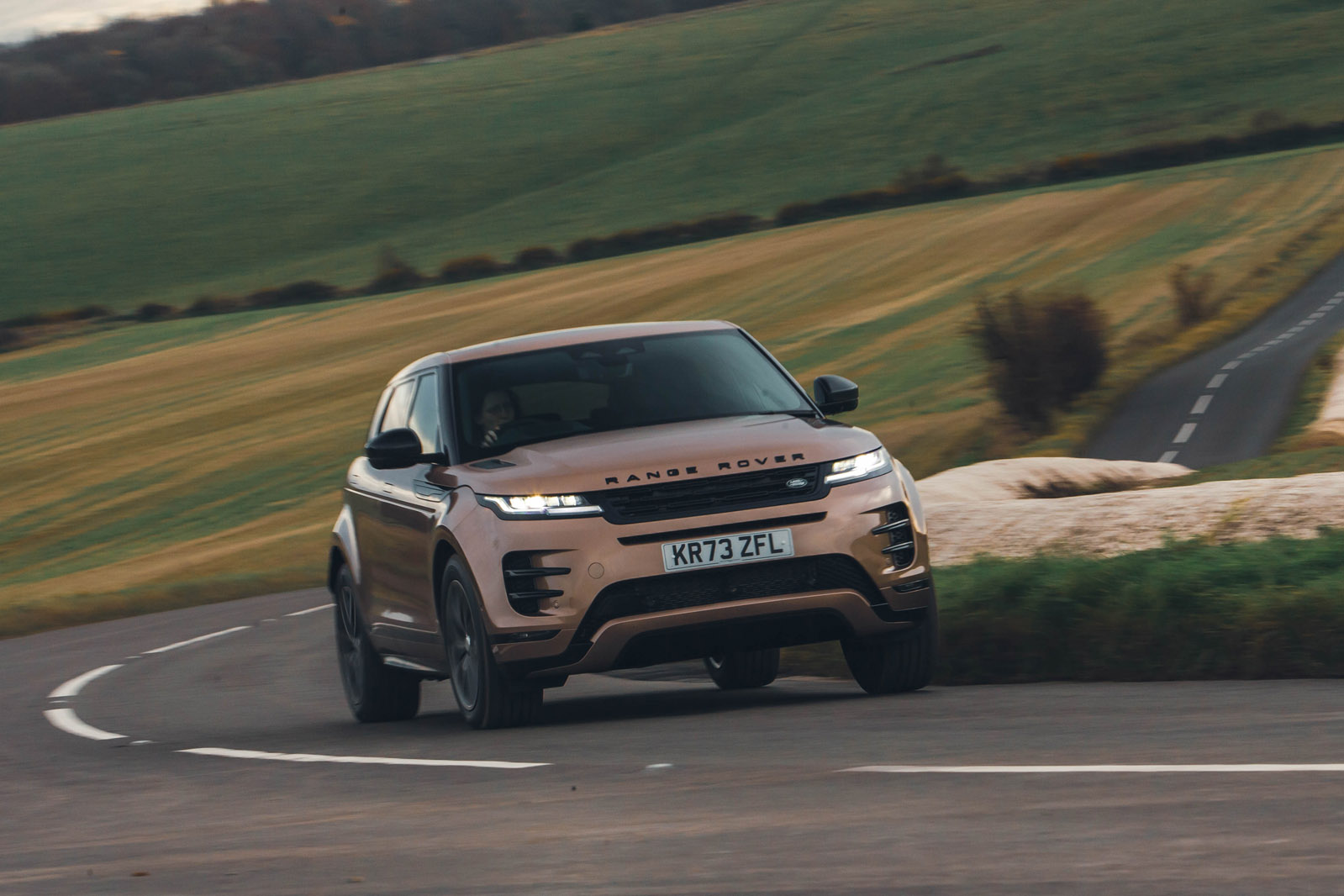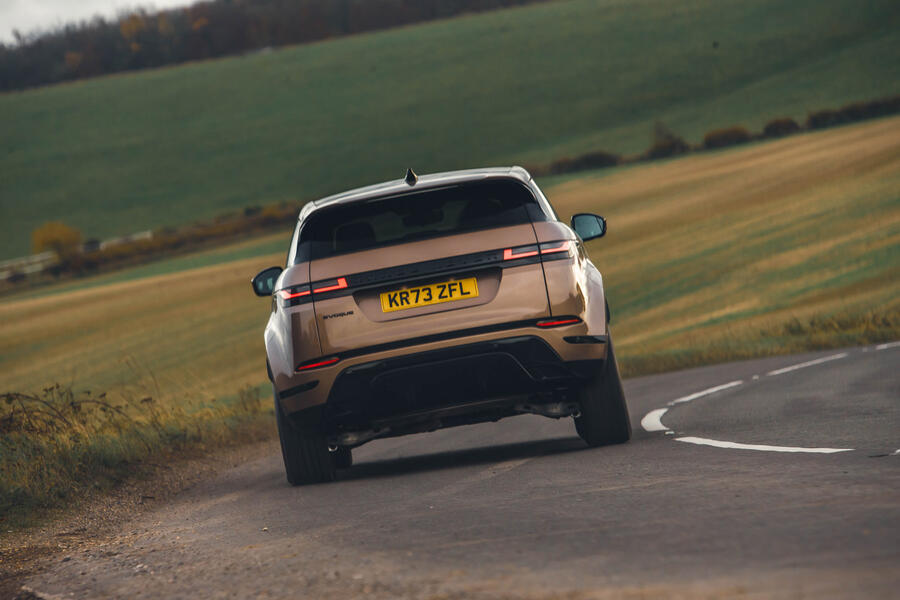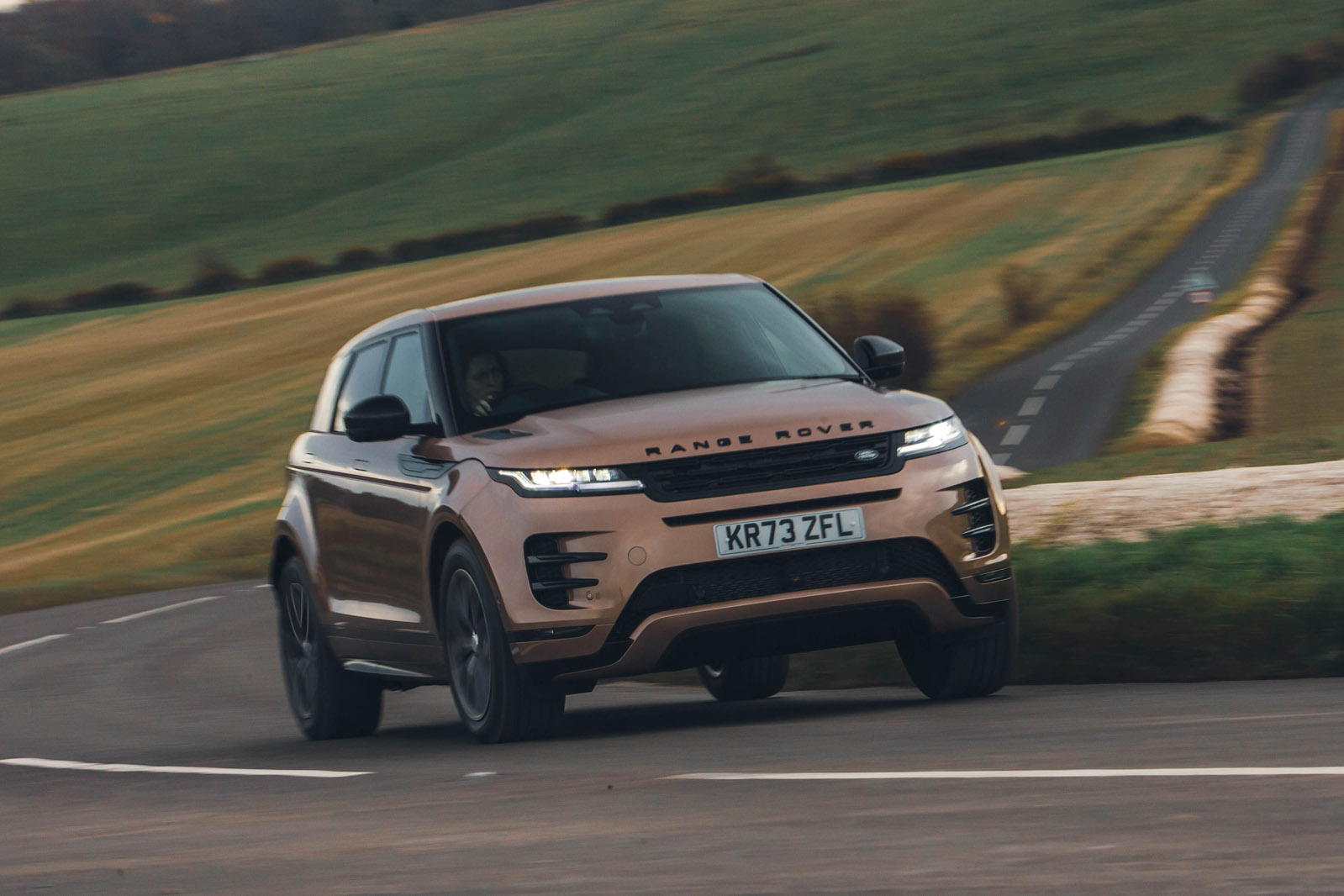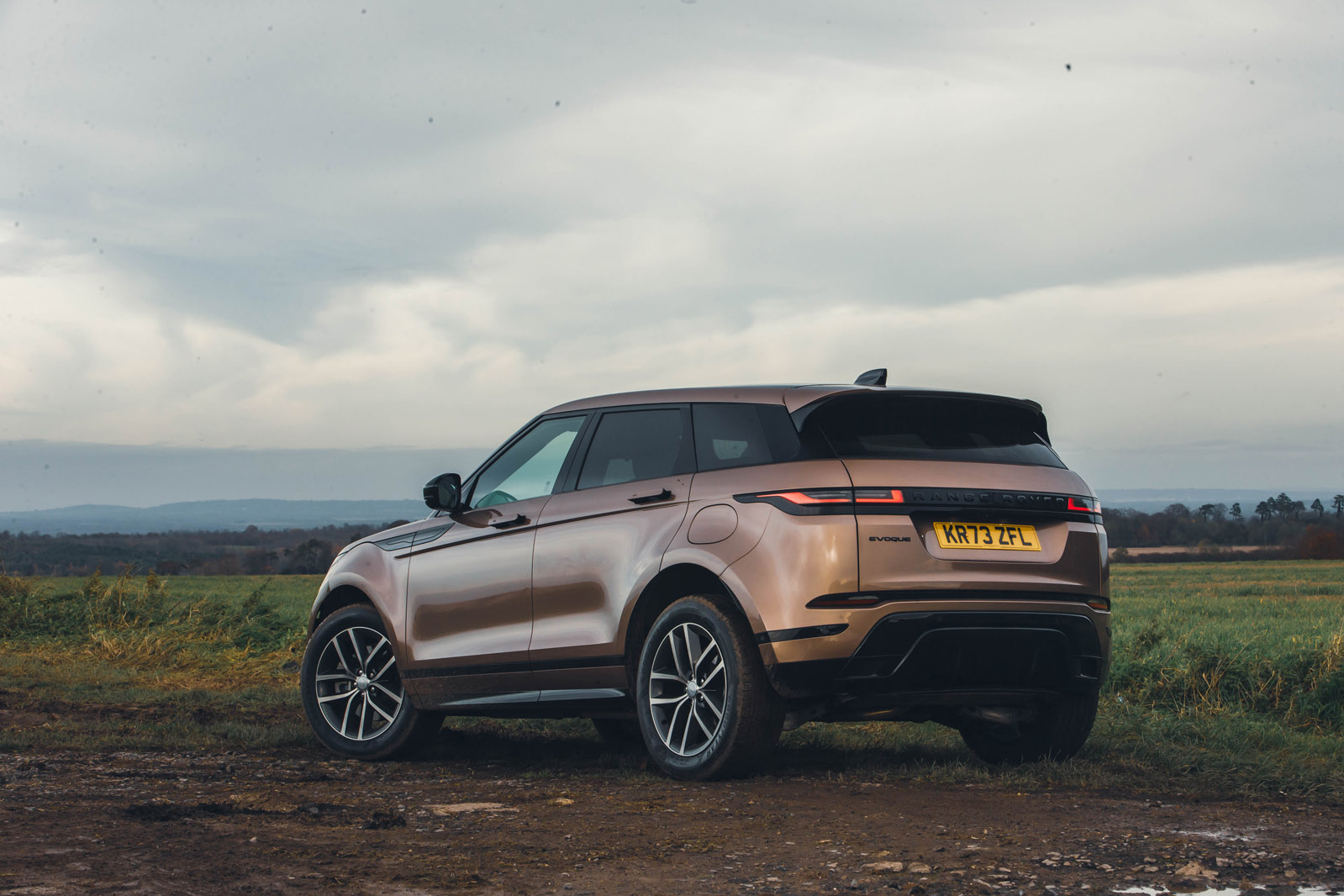If you’re no taller than 6ft 2in, you’ll be able to travel in the back seats of the Range Rover Evoque comfortably enough. Slightly flat seat cushions and a highish cabin floor will leave your thighs dangling somewhat unsupported if you’re an adult in the back row, while the car’s body design makes visibility back there decidedly poorer than it is up front. But both leg room and head room will be passable for most passengers, and access is likewise easy if you’re securing child seats.
The Evoque’s driving position remains higher than that of your typical compact SUV, with more than a hint of the classic Range Rover ‘commanding’ vantage point about it. It’s also cleverly cocooning and sporty-feeling, though, thanks to your outstretched legs and the car’s high belt line. It feels special and distinguishing, just as it should in any Range Rover.
Once we move to the front of the cabin, we have to make a distinction between the Evoque up to November 2023 and the Evoque post-November 2023; because the latest update really has adversely affected the car’s reductionist, but mostly well-considered and luxurious, ambience.
Before, it would wear its £50,000 price tag surprisingly comfortably. Our HSE road test car in 2021 had leather panelling on its dashboard and door cards that drew the eye very effectively, but substituted its standard-fit Windsor leather seats for those upholstered in Land Rover’s Kvadrat cloth. The material is made partly from recycled wool and suedecloth, and it's both tactile and appealing to look at.
When you flicked the car’s starter button, so many of its ‘hidden until lit’ controls – from the steering wheel spokes to the heater controls, and its double-decker touchscreen centre stack design and digital instrument pack – would suddenly come to life. It spoke of a mastery of technology that Land Rover just didn’t possess a decade or so previously. High technology is just what the modern luxury buyer expects, and the Evoque delivered plenty of it, with lots of style to boot.
The 2024-model-year update, however, has brought a ruthless redesign that has really taken the shine off the Evoque’s interior. It has ratcheted up the minimalim in quite a heavy-handed way. Land Rover says that the “reductive new centre console design ensures a serene cabin, crafted from the finest materials, with more usable interior space”. But what has actually happened is that the rotary knobs and separate touchscreen for the climate control, Terrain Response, plug-in hybrid drivetrain modes, and phone and media shortcuts have been replaced by a slab of cheap-looking and -feeling plastic, and a lid for the storage bin behind.
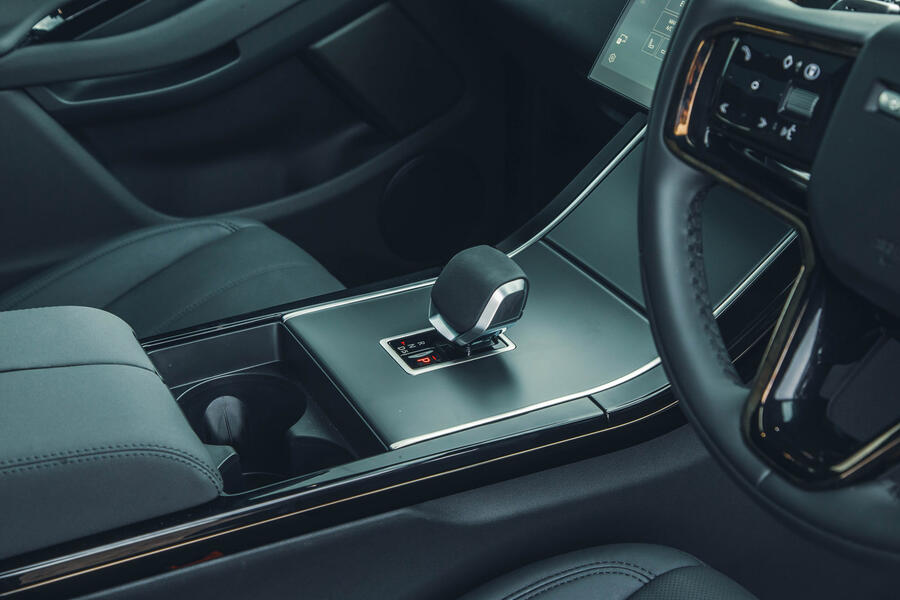
The gear selector sits on a big expanse of satin silver plastic that could have hosted some more storage trays, but doesn’t, and the plastic of the cupholders feels slightly flimsy.
JLR’s infotainment system is generally a very agreeable one, but less so now that it has a tonne more work to do. The way the new functions have been integrated seems like an afterthought. The new menu screens are ugly and clunky, the buttons are too small (because the interface wasn’t meant to host that many), and the screen’s responses seem more sluggish than before.
There’s more apparent cheapening to be spotted around the cabin. Our test car had a trim rattle; the sunroof is finished with a big slab of nasty, flimsy plastic; and the leather-free Kvadrat option has been noticeably downgraded for tactile appeal. It was a lovely cloth, but now it’s part-cloth-part-synthetic-leather, and not of the convincing sort. It’s the eerily soft stuff you find in a BYD, and it has the same chemical smell.
Range Rover Evoque infotainment and sat-nav
